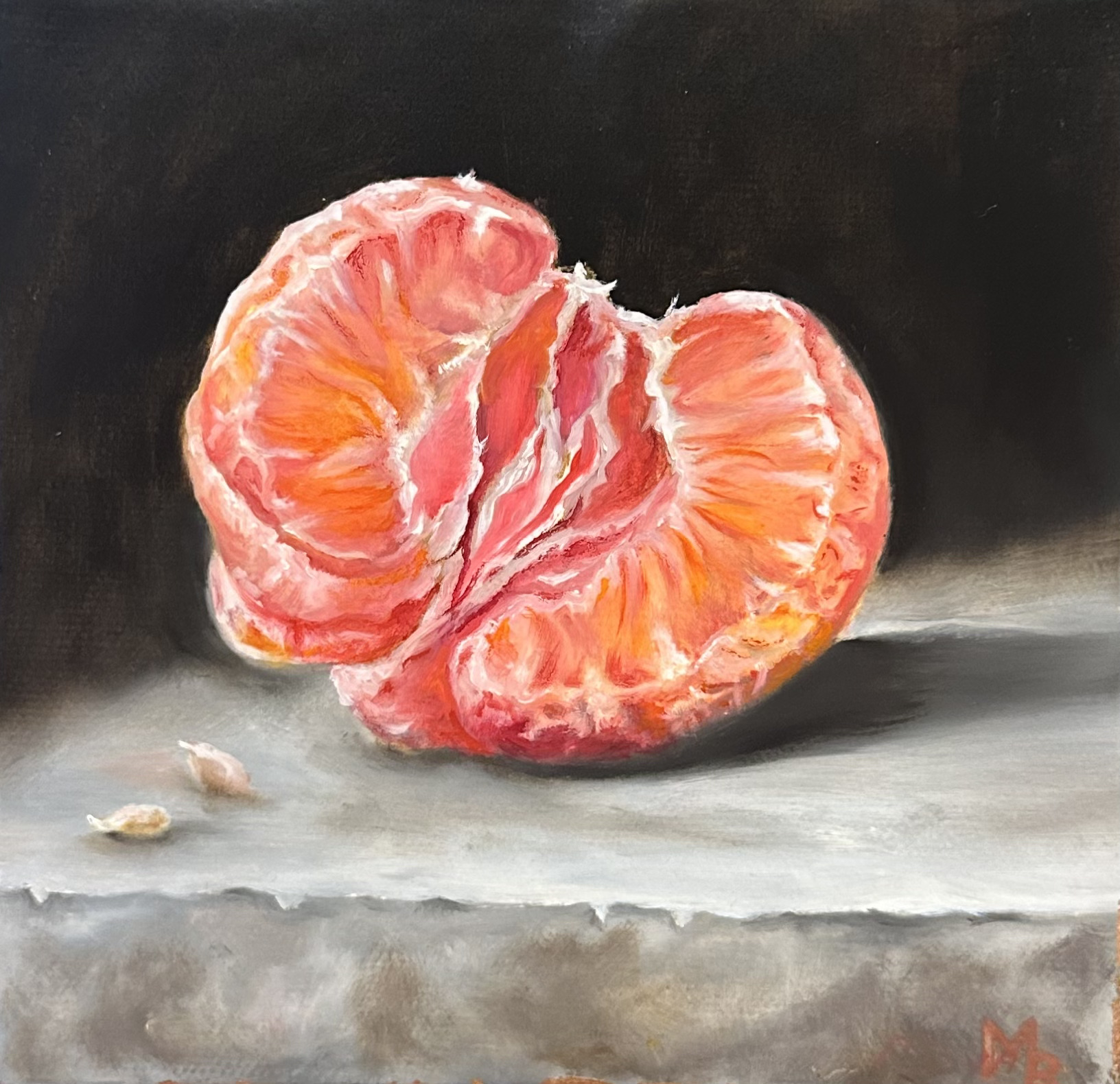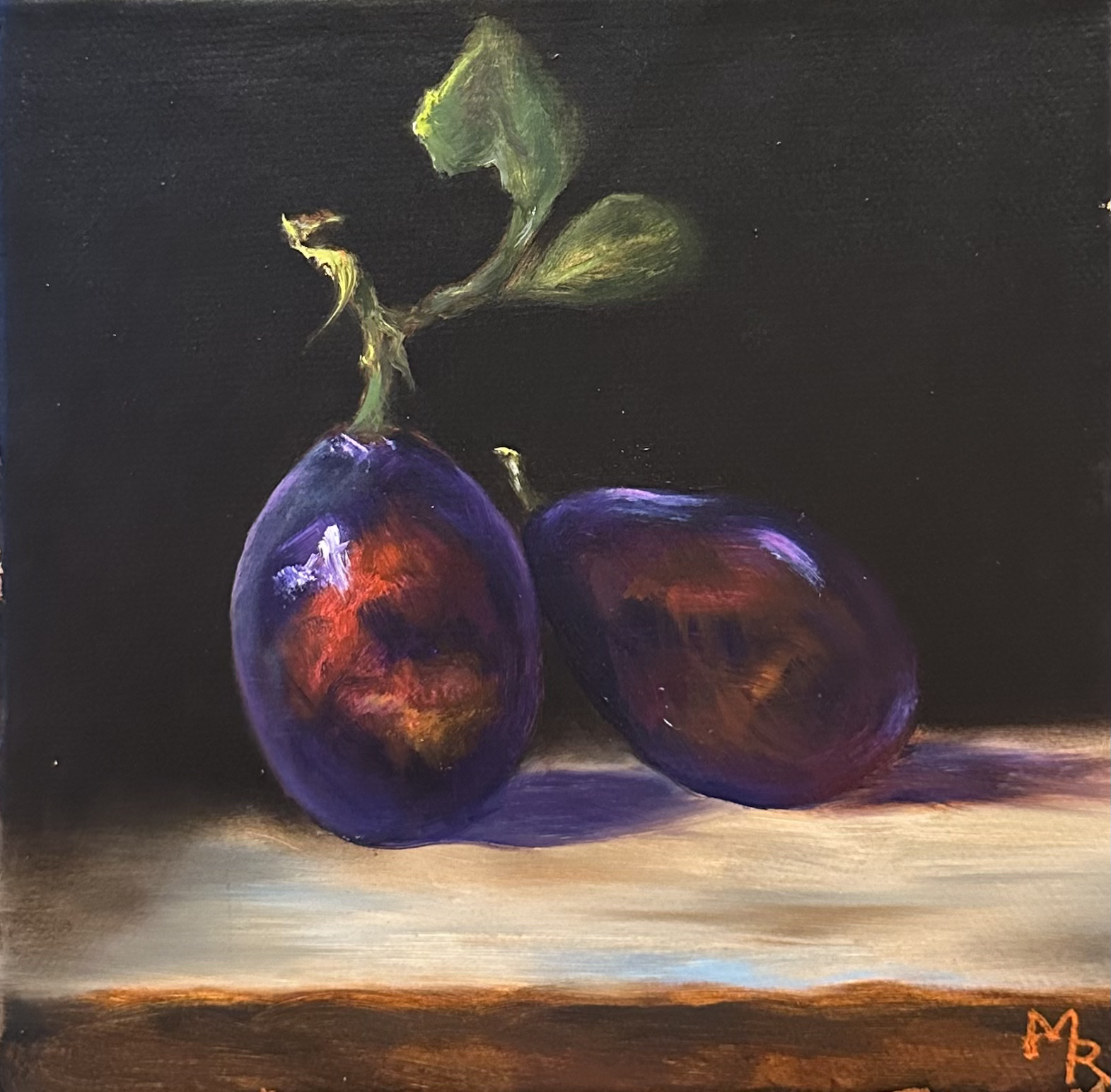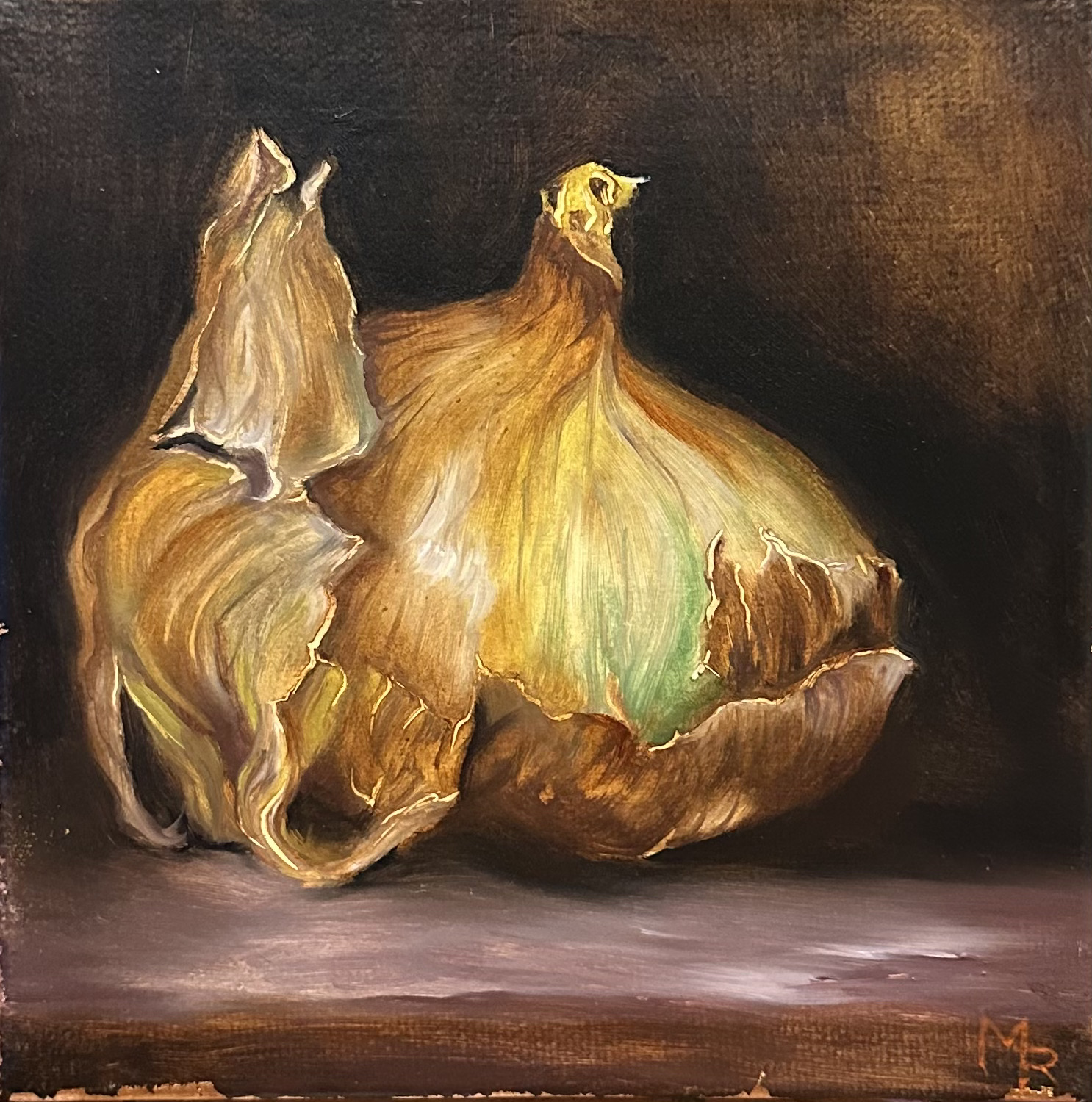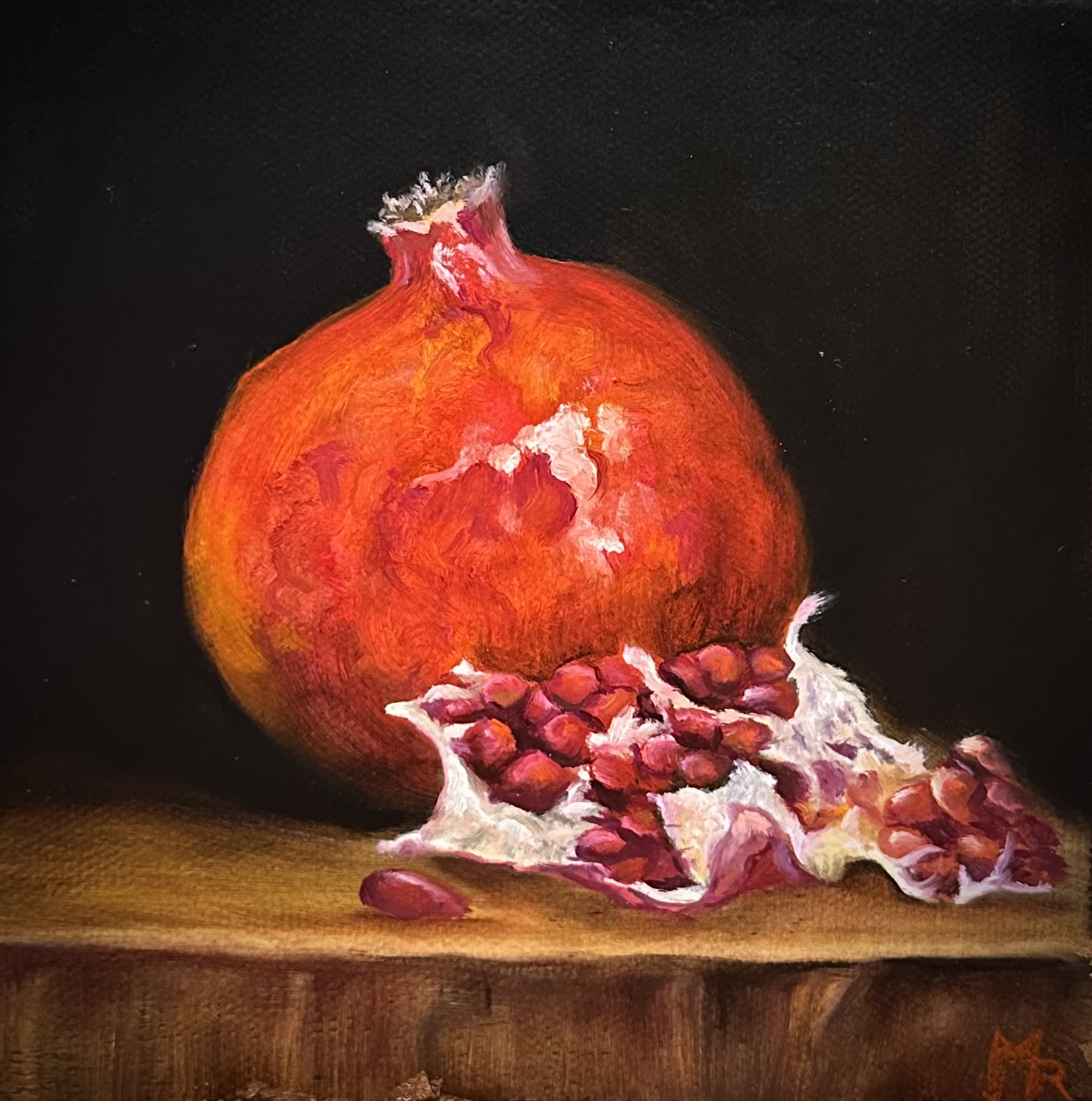It took just two ...
After two discouraging comments about her artistic ability — one from a passerby and another from a fellow artist — Moya fell into a period of deep self-doubt, questioning her value and role as an artist. This led her to withdraw from creating and instead turn inward, drawing on her philosophical training to explore the purpose and meaning of art in society.
Moya's reflections highlight the parallels between philosophy and art as mirrors of society. Her journey through self-doubt, reflection, and return to practice affirms that art can be a form of resistance, introspection, and reconnection with what matters most. While her new series is set to be shown in a group exhibition, its true value lies in the personal growth, philosophical insight, and reclaimed voice it represents.

It only took two. Yes, just two moments — two comments — to shake the foundation of my artistic confidence.
The first came during a plein air painting session that had already gone awry. The air was cold, my paints were stiff, and I'd forgotten my linseed oil in the warm confines of my studio. The canvas resisted me; the painting remained in that frustrating, unresolved "ugly baby" stage. A woman wandered over, peered critically at my work, and said bluntly, "You're not very good."
I could have invited her to sit in the cold and do battle with the reluctant paint herself — but I didn't. Instead, I recoiled inward, spiralling into self-doubt.
Not long after, another comment came — this time from a fellow artist. It wasn't malicious, just offhand, a throwaway remark about my ability. But it cut just as deeply. Then another peer casually referred to me as "just a beginner."
And so, I withdrew. If both peers and the audience couldn't see value in my work, why continue? What was the point?
Over the course of a year, I wrestled with that question. Sometimes the reflection was philosophical — intensely so. I turned, as I often do, to the discipline in which I was trained: philosophy. I'm grateful to have studied under some of the finest philosophical minds in South Africa, and returning to that intellectual space felt natural. I immersed myself in lectures and texts, exploring questions that have long perplexed the minds of philosophers and artists alike: What is art? Who is the artist? Why does art matter?

I wandered through existential, phenomenological, humanistic, and hermeneutic perspectives. The answers were never definitive, but the journey was enlightening. One idea that stuck with me was the notion — put forward by Nicolas Wolterstorff — that art and philosophy are both mirrors of society. Though their mediums differ, their purpose converges: each reflects and critiques the state of human existence within its context.
This thought stayed with me.
Meanwhile, I still wasn't painting — until one day, without much ceremony, I picked two plums out of my fruit bowl and prepped a small 15 x 15 cm canvas. In the quiet of my studio, I painted them. No pressure. No need to prove anything. No need for likes or validation. Just me, the plums, and the paint.
Then I painted an onion.
Then another piece, an orange.
Then a fourth, some mushrooms.
And then, before I knew it, I had twenty-five.
These small paintings became a kind of meditation — a daily return to simplicity, a visual poem to the overlooked beauty of everyday life. They became my training ground, my sanctuary, and my philosophical inquiry all at once. Each one asked quietly: "What do you see?"— not just to the viewer, but to me as the maker.

It was through this process that I began to see something deeper: this series of small paintings had something powerful to say. It was a statement — on the beauty of the humble and the mundane, yes — but also on something larger: the crisis of art in our consumer-driven world.
We live in an age of excess. Consumer goods proliferate, and still we demand more. The same trend has infiltrated the art world. Group shows mushroom across the country, filled with art produced at speed and scale to satisfy the marketplace.
I don't say this to disparage individual artists — I've exhibited in these shows myself. But the pattern troubles me. Art has become product. And artists have become slaves to the factory of art. In many cases, the soul of the work — the striving for meaning, growth, or excellence — feels lost. How do artists hope to compete in a world that is increasingly being driven by artificial intelligence (AI) when the very process of creativity and innovation appears to be lost through a simple formulaic "copy and paste" process for the next art show? How does art remain as a statement of culture, of our humanity, and our interpretation of the context of life when it is simply a product of the studio-as-factory and presented to a rabble of consumers to, well, consume and then discard?
So yes, these 25 pieces are going into a group show. I've drunk the proverbial Kool-Aid. I'll be "plying" them to customers. But these 25 mean something. They represent a turning point. A quiet rebellion. A reclaiming of my voice.
They are reminders of what art once was — and still can be. They remind us that beauty is still to be found in the simple act of slicing an onion, or in the way a plum catches the light on a kitchen table. This is a space of innovation and creativity too. Learning to "see" again somehow feels more urgent than ever. So does learning to comment on our humanity, forcing ourselves as artists to become relevant once more in the most important revolution of our time — AI — and to embrace the most powerful of our attributes — our creativity — in response.
Importantly, these wee pieces remind me — and, I hope, others — that without nurturing the natural world around us, without nurturing ourselves as artists, these simple pleasures in our lives, and the art that is inspired by them, may someday be lost.

References
- Eno, Brian (2003). "The Big Here and Long Now". Long Now Foundation. Published here: https://longnow.org/essays/big-here-long-now
- Presenhuber, Eva (September 2020). "There is no magic: An interview with Art Dealer Eva Presenhuber". ONCURATING. Published here: https://www.on-curating.org/files/oc/dateiverwaltung/issue48/PDF_to_Download/OnCurating_issue48_WEB.pdf
- Wolterstorff, Nicolas (1980). Works and Worlds of Art. Oxford: Clarendon Press.
- Wolterstorff, Nicolas (2015). Art Rethought: The Social Practices of Art. Oxford: Oxford University Press.
